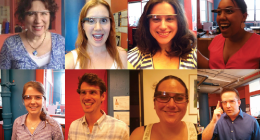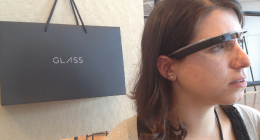“Stealth Connectivity:” Are Apple Watch and Samsung Galaxy S6 Edge Making it Easier to Sneak in Connectivity?
June 23, 2015
by Pete Wasserman, Director, Research & Consulting

When Apple announced the Watch, reactions were polarizing. The skeptics among us thought, “What do I need a device on my wrist for? I can just look at my phone.” Others said, “I don’t need to be connected all of the time.” (Of course, these are likely the same people who check their phones several times an hour to see how many likes their Instagram post got.) Mobile devices are a large part of our lives, whether we like it or not. Business Insider notes in their article, “For The First Time Ever, Americans Spend More Time Using Mobile Devices Than TV,” that Americans spend close to 3 hours a day on their mobile devices. That this number has recently surpassed the number of hours Americans spend watching television is truly remarkable.
While some champion the evolution of technology and the wonders of innovation, many have become disenfranchised by the ubiquity of devices. (My colleague, Cecilia Brown, had one of these very experiences during a recent trip to JFK’s Delta Terminal. Check out her blog post here.) I often find myself caught in the purgatory of wanting to know what's happening with my fantasy teams yet wanting to resist the droning buzz of constant connectivity, not to mention the shade thrown my way from my wife for my inclinations towards the latter. Whether it’s a significant other demanding “device downtime,” or the sense of isolation when among a crowd tapped into their phones, the backlash to how devices have invaded every aspect of life is real.
 Apple Watch, Source: Apple
Apple Watch, Source: Apple
Regardless of anyone’s feelings on the presence of devices, mobile technology manufacturers have responded to the backlash, intentionally or otherwise. Take the Apple Watch, for example. When it was first announced, one colleague mentioned the benefit of not having to dig into their pocket to pull out their phone to read a message. It’s right there on your arm. Or take the new Samsung Galaxy S6 Edge. Its curved screen edge allows messages to be read from the side – perhaps while in a pocket or laying on the side of a table.
These devices are providing a form of “stealth” connectivity – allowing users to be connected to the digital world without disrupting their physical world (and the relationships that exist therein.) As tech manufacturers respond to the connectivity backlash, the big question will be whether having this “stealth” access limits the amount of time people spend looking at their devices and the need to be tapped in. Does it reduce the impulsive need to be connected or does it merely conceal the time people spend looking at devices for the sake of real-life social relationships? No matter the answer, I think both are positive outcomes.
How is stealth connectivity impacting your digital life, and your real life? Leave your comments, thoughts, and musings below.














